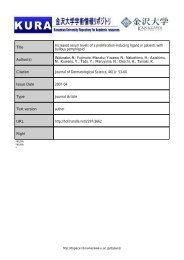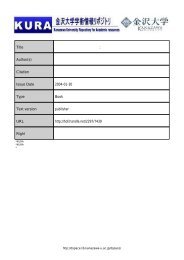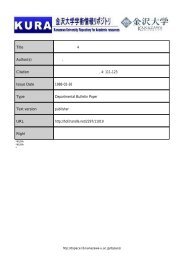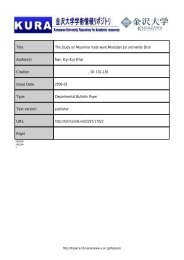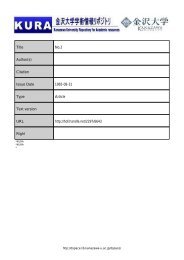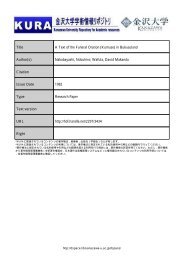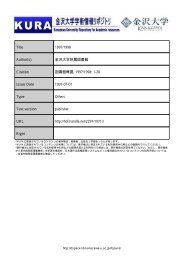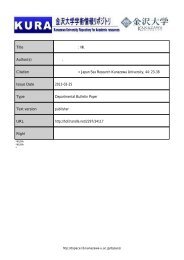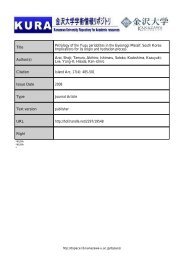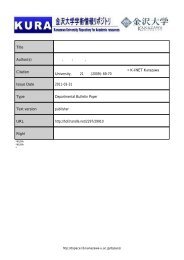Title Krafft temperature and enthalpy of solution of N-acyl amino acid ...
Title Krafft temperature and enthalpy of solution of N-acyl amino acid ...
Title Krafft temperature and enthalpy of solution of N-acyl amino acid ...
You also want an ePaper? Increase the reach of your titles
YUMPU automatically turns print PDFs into web optimized ePapers that Google loves.
mM. After the samples reached equilibrium in a thermostat at a given<br />
<strong>temperature</strong>, the supernatant <strong>solution</strong> was pipetted by syringe equipped<br />
with a disc filter (pore size 0.4µm). A reversed phase chromatography<br />
column (Tosoh co. TSKgel ODS-120A) <strong>and</strong> an UV-VIS monitor (Tosoh co.<br />
model UV-8000) were used as a packed column <strong>and</strong> a detector,<br />
respectively. The eluate was a mixed <strong>solution</strong> <strong>of</strong> methanol (80%) <strong>and</strong><br />
30mM aqueous <strong>solution</strong> <strong>of</strong> phosphoric <strong>acid</strong> (20%).<br />
DSC<br />
Differential scanning calorimetry (DSC) experiments were made by<br />
using a DSC7 (Perkin-Elmer) thermal analyzer. A sample <strong>solution</strong> was<br />
prepared in the same way as for the solubility measurements, <strong>and</strong> was<br />
sealed in a Large Volume Capsule (Perkin-Elmer) using an O-ring sealed<br />
60 µl stainless steel container. The experiments were done on the<br />
<strong>solution</strong>s in the concentration range 5 to 20 mM using about 50 mg <strong>of</strong> the<br />
samples. After the samples were kept at 0 °C for 5 hours, they were<br />
heated at a rate <strong>of</strong> 0.5 K/min. At least four runs were performed each<br />
system.<br />
Cmc<br />
Fluorescence measurements were carried out on a Hitachi fluorescence<br />
spectrophotometer F-2000 for determination <strong>of</strong> cmc values <strong>of</strong> N-<strong>acyl</strong> <strong>amino</strong><br />
<strong>acid</strong> surfactants. Excitation <strong>and</strong> emission wavelengths were 410 <strong>and</strong> 470<br />
nm, respectively. The ratio <strong>of</strong> the fluorescence intensity in an aqueous<br />
<strong>solution</strong> containing no surfactant (I 0) against that for a surfactant <strong>solution</strong><br />
(I) was used as indication <strong>of</strong> microviscosity <strong>and</strong> was measured as a<br />
function <strong>of</strong> concentration <strong>of</strong> surfactant <strong>and</strong> <strong>temperature</strong>.<br />
5




